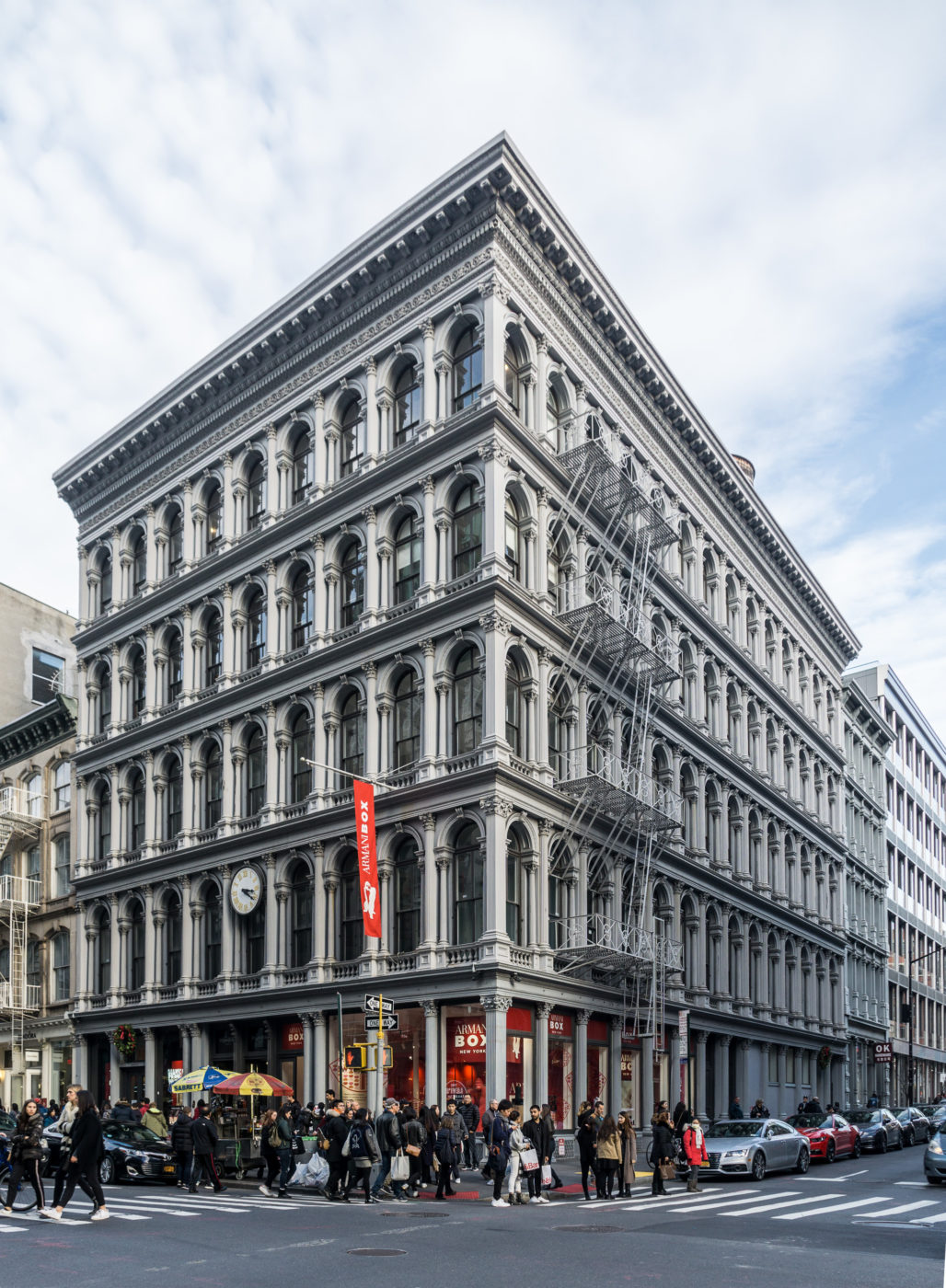The Technological Breakthrough in Our Midst That Allowed Buildings To Grow Tall
On March 23, 1857 the first Otis commercial passenger elevator was installed at 488 Broadway at Broome Street at the E.V. Haughwout Building. This technological breakthrough, along with developments in steel-frame construction, allowed buildings to grow ever taller.

The modern era elevator traces its roots to Louis XV’s Versailles palace in 1743. An elevator system called “The Flying Chair” used counterweights that allowed him to visit his mistress’ apartment on the floor above his without having to use the stairs. But it was during the industrial revolution when the elevator developed from little more than a platform attached to a rope or chain to the precursor of today’s modern elevators.
First, steam-powered elevators were developed, primarily for moving freight. In 1850, British engineer Sir William Armstrong developed the hydraulic accumulator. This hydraulic support system was comprised of a water or oil-filled cylinder with a piston that could increase pressure and allow larger loads to be carried to higher heights. But elevators remained at best unreliable and at worst, unsafe.

Elisha Graves Otis was born on August 3, 1811 in Halifax, Vermont. From 1838 to 1845 he manufactured wagons and carriages. While employed as a master mechanic in a bedstead factory, he invented several labor-saving machines. In 1852 he was sent to operate a new factory in Yonkers, New York.

It was at this site that he designed and installed what he called the “safety hoist,” the first elevator with an automatic safety device that prevented it from falling if the rope or chain broke. The following year he set up his own elevator shop in Yonkers. He sold his first elevator machine on September 20, 1853, which carried freight. But sales were few and far between.
In May, 1854 at the World’s Fair, he performed a dramatic demonstration of his Excelsior Elevator at the Crystal Palace in New York City, in which he rose high up into the air and had the rope cut.

Sales began to pick up. On March 23, 1857, he installed the first safety elevator for passenger service in the store of E.V. Haughwout & Co. department store at 488 Broadway in what is now SoHo. The elevator carried customers between the store’s five floors. The Haughwout Building was built by Walter Langdon Jr., the grandson of John Jacob Astor, who had purchased the land in 1802. It was modeled on a 16th-century Venetian library and is known as one of the finest examples of cast-iron architecture in New York City. The Haughwout Emporium was a manufacturer and purveyor of fine china, cut glass, silverware, and chandelier. His business attracted many high-profile clients, including the Czar of Russia, the Imam of Muscat, and Mary Todd Lincoln, who had her official White House china made there.

Otis’ design became a must-have. On January 15, 1861, he patented an independently controlled steam engine for elevator use. This invention laid the foundation for what eventually became the Otis Elevator Company.

Over time, Otis pioneered new elevator technologies. Gearless traction allowed elevators to overcome previous height limits. The double-deck elevator increased the amount of rentable space in a building. Automatic elevators eliminated the need for a human attendant. Computerized controllers cut travel time. Flexible steel belts doubled the lifespan of steel ropes.

The Otis elevator was a critical part of the building height race, as stronger steel allowed buildings to reach greater heights. NYC was a perfect place for the growth of elevators due to the real estate demands on a relatively small amount of land area. Property owners developed taller and taller buildings to maximize square footage and profit. By the mid-1870s over 2,000 were in service. Without Otis and his invention, NYC certainly would not have developed as it did.
